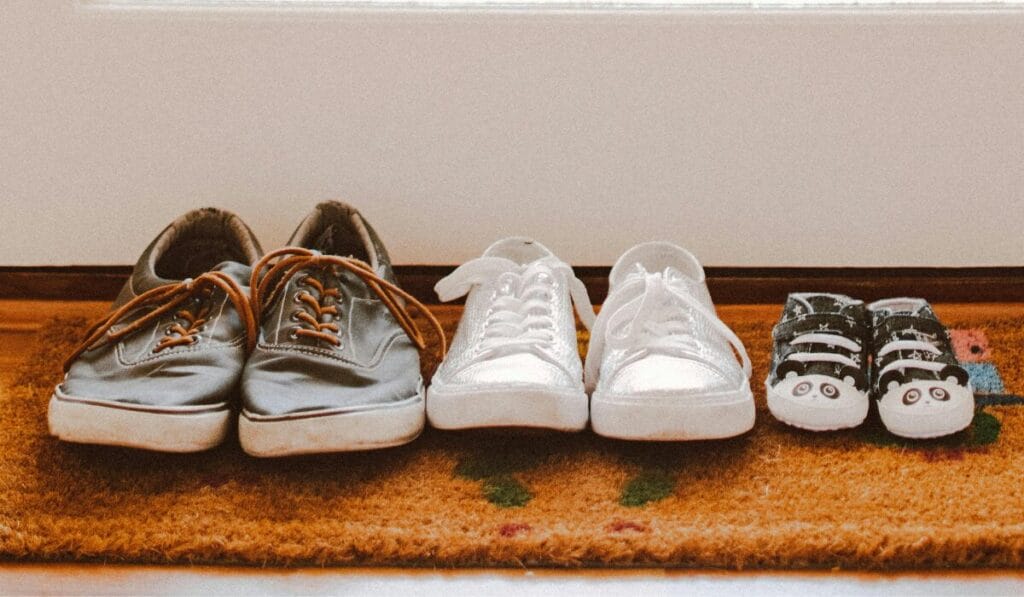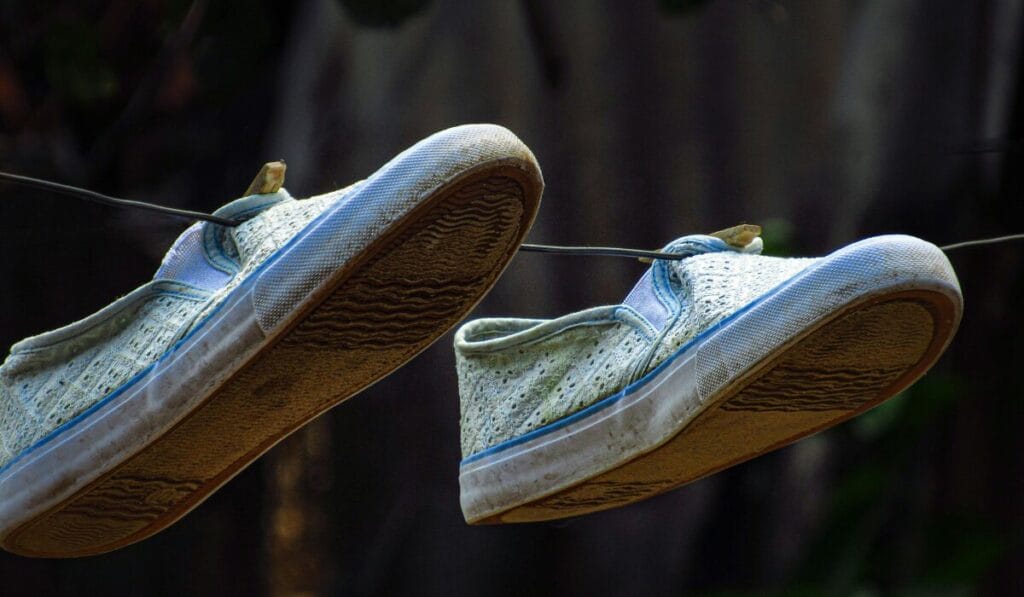Are Zero-Drop Shoes Good for Walking?
Yes, zero-drop shoes are not just good for walking, but excellent. I also use zero-drop shoes for morning walks. So everyone knows that zero-drop shoes have become a buzzword in footwear, promising a natural walking experience and better alignment. they are suited to your specific foot condition and structure, walking habits, and comfort needs. These shoes offer a natural gait and improved posture, but some individuals may require adjustments to their feet. So let’s dive deep into the ocean to understand its pros, cons, potential pitfalls, and whether it’s right for you to walk.
What Are Zero-Drop Shoes?
As the name suggests, “zero-drop shoes” are designed with a flat sole, meaning there is no height difference between the heel and the forefoot. Unlike normal walking or running shoes with high heels, Zero Drop shoes resemble walking barefoot.

Main features
- Flat Sole: Distributes weight evenly across the entire foot.
- Minimal cushioning: The pad is lighter and has less cushioning than normal shoes.
- Wide toe: Spreads the toes naturally, providing better balance and stability
Principles and Science
As you know, the easiest and most natural way to walk barefoot is the concept of zero-drop shoes. A similar pattern was in earlier times in barefoot or zero-drop shoes, which give the foot strength and flexibility. The goal of zero-drop shoes is to bring the heel and toes back in the same direction as before to restore the natural feeling.
successful Uses
Not only that zero-drop shoes used for walking, but they are also used in many other tasks.
- Running: To encourage forefoot or midfoot striking, which is not the case in other shoes.
- Hiking: Best for those who want to walk comfortably on rough terrain.
- Casual Wear: Superior and perfect for daily use.
- Exercise: Underweight dogs are capable of exercise.
Benefits
1. Adopts a natural approach
Zero-drop shoes complement the natural way of walking by straightening body parts such as the spine, hips, and knees. This alignment reduces stress on joints and muscles and makes walking easier for many people.
2. Fortify Foot Muscles
This shoe engages the foot muscles with minimal arch support, which also helps strengthen them over time. Strong foot muscles improve your balance and reduce, but almost eliminate, the risk of injury.
3. Ameliorate Posture
Now, notice also that flat soles prevent leaning forward or backward and do not favor one side, but instead adopt a neutral stance. Reduces back pain and improves posture, especially during long walks.
4. Promotes Forefoot and Midfoot Landing
Unlike older traditional shoes that promote a heel strike, zero-drop shoes encourage and promote a more efficient walking style by distributing the impact evenly across the foot.
5. Abate Knee Stress
If you think about it, zero-drop shoes have natural properties, which is why they reduce the load on the knees, especially for people who suffer from pain during long walks.

Possible Disadvantages
1. Accommodate Period
Along with the benefits, there may be some side effects that switching to zero-drop shoes can stress muscles and tendons that are not common to normal users of this flat design. Common problems include calf pain and foot fatigue during the initial weeks or days, but these are manageable.
2. Restricted Cushioning
Although limited cushioning is beneficial for some, those who prefer or need extra padding may find zero-drop shoes uncomfortable on hard surfaces. They may also be ill.
3. Not Ideal for All Foot Types
Zero-drop shoes are not for everyone, and individuals with flat feet, high arches, or certain foot conditions (e.g., plantar fasciitis) may find zero-drop shoes less beneficial. It is advisable to consult a podiatrist before making the switch, as they can provide the right advice. You can also check WebMD for common shoes that may be dangerous for your feet.
Who Should Like it
Ideal for
- People who like natural walking.
- People want to improve posture and strengthen leg muscles.
- People who do not have significant foot or walking problems mentioned earlier.
Not Ideal for
- For sufferers of foot problems i.e. those with chronic foot pain or severe stress/pronation problems.
- Individuals who want more cushioning or need custom orthotics and that’s it.
Shifting to Zero-Drop Shoes
Those looking to switch to zero-drop shoes from rest shoes should note that switching to zero-drop shoes requires a gradual approach to avoid discomfort or injury.
Tips for a Smooth Transition
- Start Slow: After getting into zero-drop shoes, start with short walks to acclimate your feet to the new design and gradually build up.
- Incorporate Foot Exercises: Get your feet used to it i.e. keep strengthening the foot muscles with exercises like leg curls and calf stretches.
- Alternate with Traditional Shoes: Gradually increase the use of zero-drop shoes while phasing out old traditional shoes, not all at once.
- Choose the Right Surface: During the initial transition, walk on soft surfaces such as grass or tracks and avoid hard roads or rough ground for now.
A Guide to Choosing the Perfect Zero-Drop Shoes for Walking
- Comfort First: Choosing shoes that feel comfortable right out of the box and this is important.
- Wide Toe Box: Make sure the shoes have enough room for your toes to move, this will give you comfort.
- Appropriate Cushioning: If one walks on hard surfaces, one should choose a pair with moderate cushioning.
- Breathable Material: Be sure to look for materials that keep feet cool and dry during long walks.
- Test Before You Buy: Walk into the store to ensure proper fit and feel, so there are no regrets later
Experiences with Zero-Drop Shoes in Everyday Life
Many people who were happy after switching to zero-drop shoes have shared their positive experiences. Here are not all, but some common definitions are mentioned.
- Better Balance: “I feel much more grounded and in control from the wheel, especially on rough trails”.
- Improved Posture: “My back pain completely disappeared when I started using zero-drop shoes.”
- Initial Discomfort: “When I moved in, the first few weeks were tough, but it was worth it in the end.”

Real User Reviews
Review from Walmart
Wearing zero-drop shoes makes me feel like I don’t have shoes on, they are really comfortable, there is no burden on my feet.
Source: walmart.com
Review from Amazon
Zero drop reduces stress on joints, keeping your feet close to the ground improves natural posture, and increases stability. Barefoot design is sensory feedback, provides natural strength, and builds flexibility.
Source: Amazon.com
What Experts say?
Run To The Finish
Ultra shoes, which are zero-drop shoes, provide balanced cushioning, which mirrors natural gait and reduces impact on joints.
Source: runtothefinish.com
Metro Chiropractic
Provides strength to the foot, increases flexibility, can reduce dependence on arch support, and naturally engages the foot muscles.
Source: metrochiroak.com
Conclusion
So, are zero-drop shoes good for walking? So the answer is yes, they are a great option and convenience for those looking to adopt a natural gait and improve posture. However, they are not a one-size-fits-all solution. Before switching to these shoes, consider your feet’s texture, structure, walking habits, and comfort preferences. With gradual adaptation and the right pair of zero-drop shoes, you can enjoy a walking experience that feels natural and rewarding and can be a favorite of almost everyone. If you are looking for all best walking shoes check out our full guide “best walking shoes”
FAQs
Q1 . Are zero drop shoes ok for walking?
Yes, zero-drop shoes are good for walking because they reflect the natural gait, it strengthens strength and posture, however, if you are interested in getting zero-drop shoes, move slowly because moving all at once can cause muscle pain.
Q2 . What are the disadvantages of zero drop shoes?
Switching from other shoes to Zero Drop can cause muscle soreness.
People with plantar fasciitis and foot problems may experience discomfort.
People used to traditional shoes may experience a lack of arch support.
3. What do podiatrists say about zero drop shoes?
Most podiatrists believe that zero-drop shoes are very beneficial, but when used correctly, podiatrists say that these shoes promote natural gait and can eliminate some problems. Podiatrists also say that people who are accustomed to traditional shoes may not be able to move quickly and may experience injuries.
4. Are zero drop shoes good for the knees?
Yes, zero-drop shoes are great for knees because they encourage midfoot strike, this shoe contributes to better alignment and reduces impact forces on the knees.
Q5. Can zero-drop shoes cause pain in my feet?
Initially, when one transitions to these shoes, some individuals may experience foot pain as their muscles adjust as they are accustomed to traditional shoes. It is usually temporary and can be reduced with gradual transitions and eventually disappear.
Q6. Are zero-drop shoes appropriate for people with flat feet?
They may not provide sufficient arch support for individuals with flat feet. Consulting a podiatrist before switching is recommended. This is good.
Q7. Are Zero-Drop Shoes Suitable for Long-Distance Walking?
Yes, but they require an adjustment period, not all at once. Once your feet get used to it, they can be a comfortable choice for long walks, and you’ll experience it.


Masha Allah an unprecedented blog presented by developer. And I suggest this to all those who want to get knowledge about it.
Walking Shoes Ra is a trusted platform for honest and unbiased reviews. I was able to find the perfect pair of walking shoes without any confusion. Highly recommended.